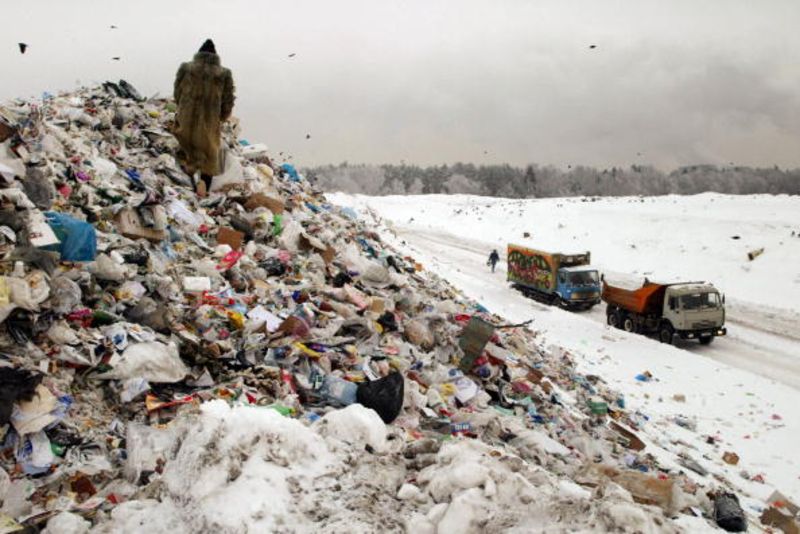Human society has actively “produced” its entire history and accumulates a huge amount of a wide variety of garbage in the territories entrusted to it. Until recently, they somehow managed to cope with it. But in recent decades, improved living standards and an excessive increase in the consumption of goods have tended to continuously increase the amount of waste. As a result, the contamination of vast territories with liquid, solid, household and industrial waste has reached impressive proportions. Particular attention should be paid to municipal solid waste, which is an uncontrolled and unstable mass, their annual growth in Russia alone is at least 3%, and in some countries the figures rise much higher. In the framework of the article, it will be considered what is solid household waste and how to process it.
The concept of municipal solid waste
The ecological situation of cities and settlements will be largely determined by the state of the system of sanitary cleaning of the territory from non-industrial waste. Mostly, solid domestic waste generated as a result of household activities of the population is ranked here.
Municipal solid waste is goods that have lost material attractiveness and usefulness for the consumer, as well as residues of raw materials, food products, semi-finished products, and other products not suitable for consumption. Human waste is generated everywhere: in residential and public buildings, in entertainment, trade, sports and other centers, in commercial, industrial organizations and utilities, as well as in streets and courtyards.
It is worth noting that in today's Russia, the mass flow of household waste, according to conservative estimates, is 400 million tons. A significant share in it falls on packaging materials (more than 30%): wrapping products, films, various containers, bags and more.

Waste classification and composition
Municipal solid waste is a heterogeneous mixture of various materials and rotting products, which varies in mechanical, physical and chemical parameters.
The composition of municipal solid waste contains the following components:
- pulp processing waste - magazines, newspapers, paper, packaging, wood;
- waste and garbage of biological origin - bones, hides, food, vegetables, fallen leaves;
- petroleum waste - textiles, rubber, plastics;
- glass;
- metals.
Particularly dangerous types of garbage for the environment and humans include: cosmetics, household chemicals, paint and varnish products, electrical appliances, medical preparations, pesticides and fertilizers, diagnostic devices (thermometers, barometers, tonometers), batteries and accumulators.
In different states, cities and settlements, the composition of household waste will be different. Many circumstances affect this, but mainly the standard of living of the population, culture and climate. The composition of the garbage in a particular area will be influenced by the collection procedure: individual containers for glass containers, bottles, waste paper and food waste. The waste content may also vary based on the season of the year and weather conditions. For example, in the fall there is always an increase in the amount of food waste, which is explained by a change in the diet of products, the population begins to consume more fruits and vegetables.

Norms of waste
The phrase “waste accumulation rate” implies a certain amount of garbage, which on average comes from one person over a certain period of time. Accumulation rates will be determined by many factors: features of the housing and public facilities (availability of sewage, gas, garbage chute); number of storeys of the building; type of heating system and type of fuel used, general welfare of the population and climatic conditions. For large cities, waste accumulation figures will be slightly higher relative to medium and small settlements. The duration of the heating season will also be of great importance.
Based on the region, the numbers of accepted norms vary, however, approximate statistics can be identified. In well-maintained residential complexes, the norm of municipal solid waste per person for a year is about 200-300 kilograms, in unfinished houses - it can reach up to 450 kilograms. In various public institutions, the numbers will not be so significant: the rate of waste per year per person will amount to approximately 160 kilograms. The average indicator is fixed as the general rate of accumulation; it is used for cities over 100 thousand people.
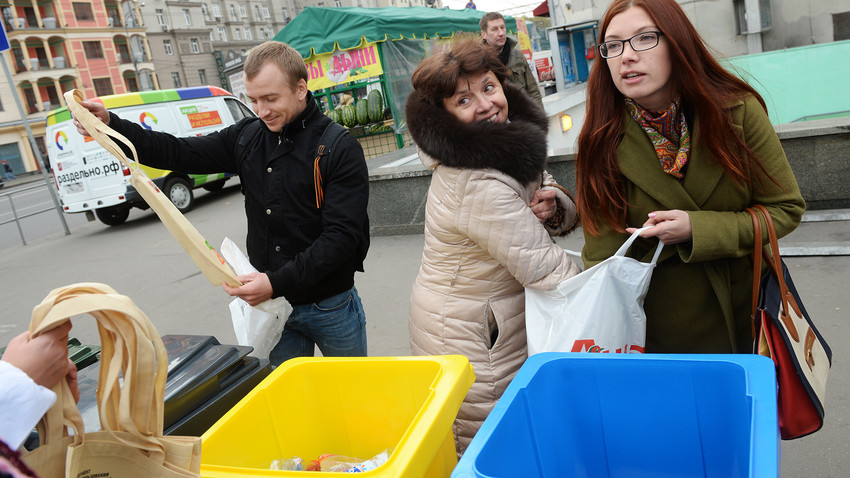
Garbage collection stage
Disposal of waste from streets, residential areas, institutions, centers consists of several operations. And the very first of them is the collection of garbage from the population. Two methods are most applicable here - unitary and separate. In the first case, all the waste is stored in a general waste bin, in the second case, the collection takes place according to the types of waste (food, paper, glass, metal, etc.) in different waste bins. Such a scheme assumes the presence of additional transport units for the removal of municipal solid waste, but at the same time it allows the use of raw materials for recycling.
In the urban environment and settlements, garbage containers are installed in orderly places: in residential neighborhoods on designated sites, in various institutions - from the end walls (or between buildings) and at specialized outbuildings. They try to place the sites of garbage collectors in such a way as to create conditions of maximum convenience when using them and provide unhindered access to vehicles. An important point in the placement will be to take into account the risk of air and soil pollution, as well as compliance with current aesthetic requirements, for which a mandatory fencing with a green zone or low walls is provided.
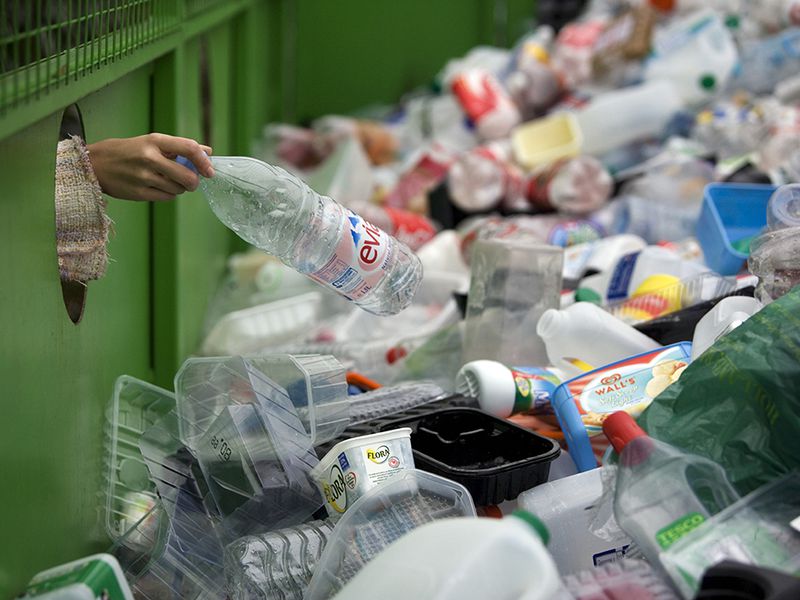
Sorting problems
In Russia, garbage sorting is considered a somewhat problematic stage and is still in an embryonic state. To solve this problem, the following measures must be taken everywhere:
- Provide residents of cities and districts with containers for separate collection of household waste with detailed information about where the garbage is placed and how it is preferable to do it.
- To inform the population through the media about the advantages of separate collection of municipal solid waste.
- Exercise control over separate waste collection sites and use an incentive system.
- Build waste sorting plants specializing in the further sorting of garbage received from citizens.
As European practice shows, the separation of waste into containers has a positive effect on the depth of waste processing and is the best option for its disposal. With this approach, the costs of recycling are significantly reduced, and no more than 15% of the total mass remains on unused residues.
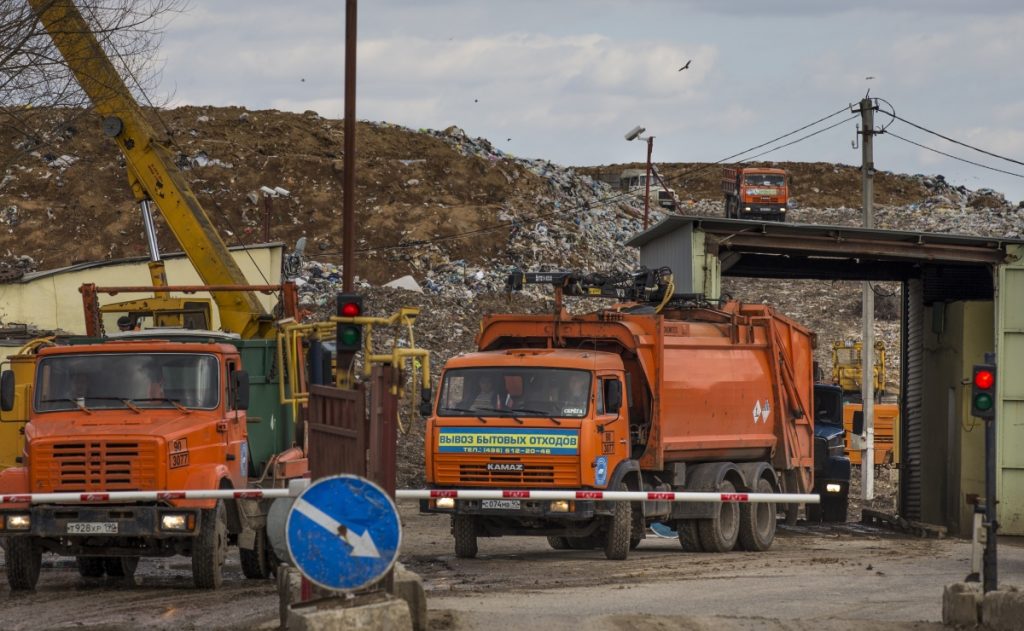
Solid Waste Disposal
For transportation of household waste, as a rule, specialized transport is used - garbage trucks. It is divided among themselves:
- for use, separate machines for residential areas and for the removal of large waste;
- by body capacity;
- on the approach of loading and unloading;
- by type of garbage compaction.
In large cities, the removal of municipal solid waste is fraught with difficulties of large distances, which the machine regularly has to overcome. This is one of the reasons why garbage collection in Russia is the most expensive stage of disposal. Also, a significant part of the garbage is associated with the operation of commercial trading floors, and often transport for its removal may not be enough. The volume of generated garbage, travel costs and transportation problems force us to take rational measures to solve the problems of the collection system. Often, such decisions only lead to higher tariffs for municipal solid waste.
Recently, in world and domestic practice, direct waste collection is replaced by a two-stage approach, using intermediate storage stations. This technology is being actively implemented in large cities, in which polygons are located at a considerable distance.

Solid Waste Landfill
For garbage removed from settlements there are special facilities that are environmental complexes. There is storage, isolation and disposal of incoming waste, which protects the environment and prevents the spread of pathogens, insects and rodents.
The existing landfills were mostly constructed 40-50 years ago, without the use of any special technologies. In rare cases, geologists have been recruited to select a site with appropriate soil that would not let the filtrate pass into groundwater. Today's landfills are solid engineering structures, whose area is completely covered by a specific multilayer material. Modern technologies allow for the disposal of municipal solid waste with maximum protection of the atmosphere and soil from the penetration of the filtrate.
Unfortunately, the bulk of waste in Russia is collected in landfills (often spontaneously organized), such as landfills. As a result, significant areas of land are characterized by an increased concentration of carbon-containing materials (rubber, plastic, polyethylene, etc.). Such landfills become a source of air pollution, groundwater and surface water. The accumulation of municipal solid waste is recognized as the most inefficient way to deal with them.

Disposal Methods
There are several approaches to solving problems with garbage in the world, and each of them is applied depending on various factors. Each method of disposal has its advantages and disadvantages.
- Recycling. This approach is considered the most rational and safe way to dispose of waste. Its essence boils down to the fact that the waste is recycled into something of value and benefit. For example, organic waste is used as fertilizer (composting) or used to produce thermal energy, inorganic waste is used in the production of building materials, and metal waste is pressed and sent to production. Such an approach to recycling does not pay off any benefit, except as a benefit for the ecological environment, which often no one takes into account.
- Garbage incineration. This method of disposal is recognized as relatively economical, as it helps to significantly reduce the amount of garbage without unnecessary costs and in a short time. Incineration of municipal solid waste is a process that requires preliminary sorting of garbage, since different substances burn differently, and some of them categorically should not get into fire. It should be noted that the greatest danger lies in the incineration of waste at low temperatures. For the full destruction of garbage, a temperature of over 850 degrees is required, and only with it will neutralization of toxic substances take place.
- Burial place. This is the oldest and most economical method of waste disposal, which is widely practiced in Russia. For it, territories remote from settlements are allocated, where garbage is buried in the ground at a certain depth. However, it is usually not sorted, so its composition may include the most dangerous substances. The indisputable advantage of this approach is its low cost, which, unfortunately, allows it to be quite in demand. The disposal of solid waste is one of the worst waste disposal options.
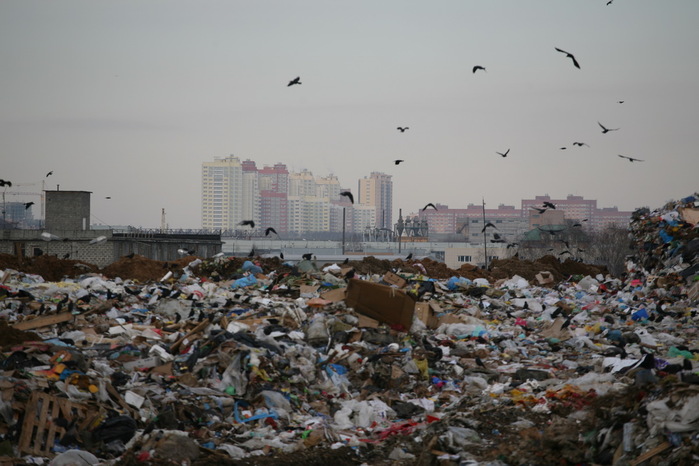
Environmental impact
The problem of municipal solid waste entails a serious environmental hazard that affects all stages of waste management, starting from the moment of its collection and ending with the disposal or destruction of waste fractions. The situation is complicated by the fact that due to the lack of separate garbage collection, expired medicines, various containers with residues of paints, varnishes and pesticides, mercury-containing devices, fluorescent lamps, etc. fall into the general container along with safe waste. The collected waste is taken out not far from settlements and is often thrown into spontaneously organized landfills, which is not permissible from an ecological and hygienic point of view.
As noted earlier, in Russia the practice of waste disposal through landfill is most established: 97% of the total mass of waste is disposed of at established landfills. According to the stated facts, 90% of such landfills do not meet the minimum environmental safety requirements, which leads to long-term environmental pollution. Large landfills have the most intense and deepest impact on natural components, since a significant amount of pollutants is concentrated on their limited territory. They pose an environmental threat to a particular area, being a potential polluter of high power.

Conclusion
Not a single state has yet been able to avoid the garbage problem, and somewhere it began to take on a rather menacing scale. In the Russian Federation, until recently, the waste management system hardly practiced the recycling and reuse of valuable components, as a result of which significant state budget funds were allocated for the maintenance of environmentally hazardous and economically unprofitable landfills. Along with this, significant amounts of energy and raw materials, which are integral components of waste, remained neglected and buried. Obviously, the Russian waste management system needed reforms, the introduction of new technologies for processing and recycling waste. But the issue of rubbish seriously matured only by 2014, when a law was passed at the legislative level on a new waste collection and disposal system. In subsequent years, a number of decisions and documents were approved, which gave rise to the current reforms.
Since January 2019, the introduction of a smooth transition to separate waste collection is planned in most regions of Russia. In the Moscow region, they began to move slowly in this direction since 2017. Administrative authorities start the construction of waste recycling complexes that meet modern requirements, and systematically close dammed landfills, where solid domestic waste was buried. These trial programs work in many cities near Moscow and already give the first positive results. And it is worth noting that at the same time, residents have the right to choose, switch to separate waste collection or continue to use the garbage chute.
